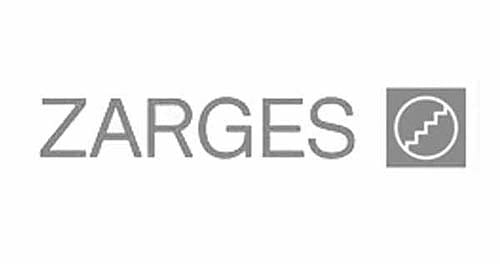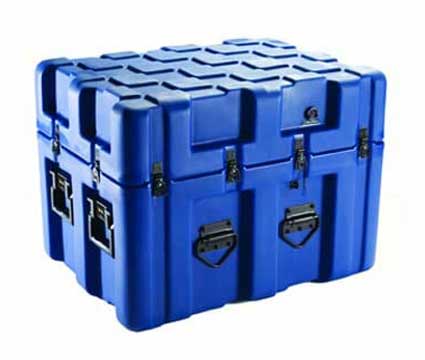Introduction
Why NATO Packaging should matter to you
If you are thinking about supplying products to the Ministry of Defence (MoD) or into the wider defence industry, there’s something you need to know straight away: packaging matters as much as the product itself.
That might sound surprising, after all, packaging in the commercial world often feels like a side issue. You put something in a box, add a label, and send it on its way. However, in the defence industry, packaging has to do a lot more. It must protect equipment in harsh climates, keep it safe for years in storage, and ensure that the item can be identified and used quickly by military personnel anywhere in the world.
This is where NATO Packaging comes in; it’s a system that tells suppliers exactly how products should be packaged and labelled. These rules make sure that everyone, from the UK to other NATO countries, follows the same approach. If you want to sell to the Ministry of Defence (MoD), understanding NATO Packaging is essential.
In this blog, we’ll walk you through what NATO Packaging Codes are, how they link to NATO Supply Classes, and why they matter if you are a UK supplier. We’ll also explain the standards and schemes that accompany them, so you have a clear understanding of what you need to know.
Contents
The NATO Codification System
The foundation of the system
Let’s start at the beginning. After the Second World War, NATO realised that each country had its own way of naming and numbering equipment. This made cooperation difficult because the same item could have different names depending on its origin. To solve this issue, NATO created the NATO Codification System (NCS).
The NATO Codification System assigns a unique number, known as the NATO Stock Number (NSN), to every item of supply. Think of it like a barcode in a supermarket.
A NATO Stock Number is 13 digits long, with the first four digits showing the “class” of the item (for example, whether it’s a piece of packaging, a weapon part, or an electronic component). The rest of the number identifies the country that codified it and the unique record for the item. Once a NATO Stock Number has been assigned, that item can be ordered and recognised by any NATO nation.
NATO Packaging Codes
Instructions on how to pack
Where the NATO Stock Number identifies the item itself, NATO Packaging Codes describe how that item must be packaged. Every codified item that requires specific packaging standards has these instructions tied to its record.
Packaging Codes cover several key aspects:
- They specify the level of packaging required, which reflects the level of protection needed. For example, packaging may need to withstand two years of storage.
- They define the preservation method, such as whether desiccants or special coatings must be used to protect against corrosion or moisture.
- They identify the type of container (fibreboard cartons, timber crates, pallets, or specialist cases).
- They dictate the markings required on labels, including the NATO Stock Number and NCAGE code, as well as contract numbers, handling instructions, and barcodes.

For suppliers, the key point is that NATO Packaging Codes remove ambiguity. Whether your item is shipped from Portsmouth to a depot in Germany, or from the US to a base in the Middle East, NATO Packaging Codes ensure it is prepared in the same way. This consistency is essential for protecting the product, ensuring safety, and keeping logistics systems synchronised.
NATO Supply Classes
Packaging as an item of supply
Packaging itself is also part of this system; there is a whole section of NATO Supply Classification dedicated to packaging, called Supply Class 81. This includes cartons, crates, bags, pallets, and all other materials used to pack and protect goods.
It’s essential to understand how NATO Packaging Codes link to the NATO Supply Classification System. Each NATO Stock Number begins with a four-digit code that identifies the supply class.
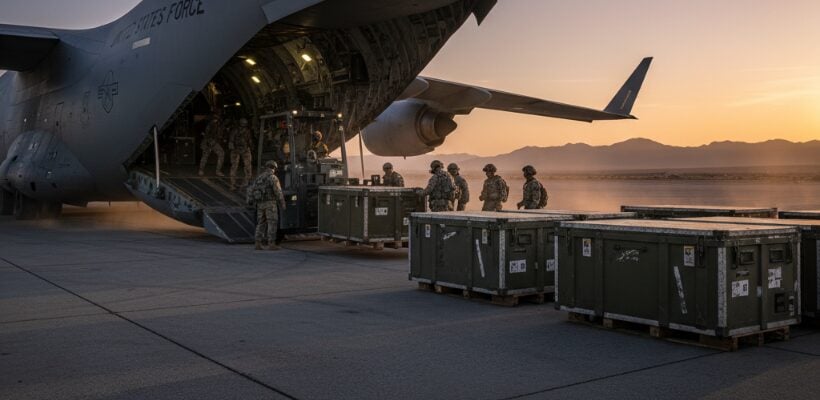
Within Supply Class 81 Containers, Packaging, and Packaging Supplies, there are 10 subclasses. NATO nations can catalogue, order, and stock these packaging items just as they would spare parts and tools:
- 8105: Includes envelopes, liners, textile and paper shipping bags and closures for bags and sacks.
- 8110: Includes barrels, kegs, storage pails, collapsible tubes, mailing tubes, and closures for drums and cans.
- 8115: Includes shoe boxes, beer cases, pill boxes, piano cases, engine boxes, and bombsight boxes.
- 8120: Includes filled gas canisters and items related to gaseous and liquified gaseous dispensing systems.
- 8125: Includes shipping jugs, carboys, and ampoules.
- 8130: Includes reels and spools used to transport materials like wires, cables, ropes, tapes, and other flexible materials.
- 8135: Includes wrapping paper, barrier paper, corrugated paper, baling bands, baling ties, gummed paper tape, box liners, separators, staples, baling wire, and performed cushioning inserts.
- 8140: Includes all shipping and storage containers that are designed for guided missiles, major missile sections, missile warheads, and other guided missile components.
- 8145: Includes specially designed components for special shipping and storage containers.
- 8150: Includes general purpose packaging, dry bulk, named cargo, air and surface containers and ammunition grade packaging.
*This list is not exhaustive; find the complete list of what is included in these subclasses here.
So, imagine you are supplying a radio spare part. Its NATO Stock Number shows it belongs to Class 5820 (Communications Equipment). The NATO Packaging Code might say “pack to Level J”, use preservation method 20, and place it in a “fibreboard box”. That fibreboard box is itself listed under Class 8115, so the materials you use are also standardised across NATO.
What should you know as a supplier
The UK perspective
In the UK, the organisation responsible for managing all of this is the UK National Codification Bureau (UKNCB). They make sure items supplied to the Ministry of Defence are accurately recorded in the NATO system.
To supply to the defence industry, your business may require a NATO Commercial and Government Entity (NCAGE) code. This is a five-letter code that identifies your company in NATO databases, and it’s how buyers know who made or supplied a given item.
You will also come across DEFCON clauses in contracts; these are standard rules written into Ministry of Defence (MoD) contracts. For packaging and codification, DEFCON 117 is a common one; it says that suppliers must provide technical information (product drawings and specifications), so the Ministry of Defence (MoD) can assign the correct NATO Stock Number and Packaging Code.
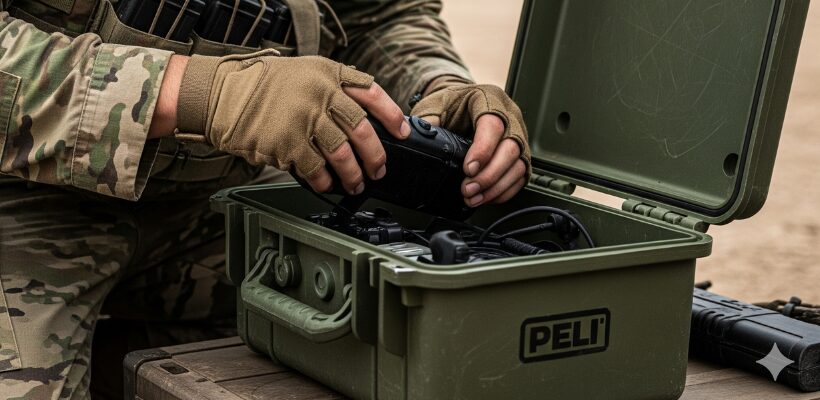
The actual packaging rules are outlined in Defence Standard 81-41. This standard outlines the different packaging levels: Level J (for worldwide climates), Level N (for non-extreme storage conditions), and Level P (for close to commercial packaging). For some items, the Ministry of Defence (MoD) might issue a Services Packaging Instruction Sheet (SPIS), which is essentially like a recipe card with detailed instructions on how to pack a particular product.
If your contract requires high-level packaging, you may also need to work with a company approved under the Military Packager Accreditation scheme (MPAS). This accreditation confirms that the packager is capable of designing and producing packaging that meets all Ministry of Defence (MoD) requirements.
Why NATO Packaging matters for your business
Protecting your products and building trust
If you’re new to this field, NATO Packaging might sound complicated, but the reasons behind it are simple. It ensures that military supplies are protected, clearly labelled, and ready to use anywhere in the world.
From your perspective, getting NATO Packaging right helps avoid significant problems. For example, if your packaging doesn’t meet the rules, your delivery could be rejected, delayed, or even fined. Worse still, it could harm your reputation as a supplier. On the other hand, if you follow the system, your products will be accepted the first time, and you’ll build trust with your customers.
Once your product is codified correctly and packaged, it can be procured by any NATO nation, not just the UK Ministry of Defence (MoD). That opens the door to a much broader market, giving you the chance to grow your business within the defence sector.
Summary
Your next steps with NATO Packaging
NATO Packaging Codes are rules that tell you exactly how defence products should be packed and labelled. They are part of the wider NATO Codification System, which assigns a unique NATO Stock Number to every item. NATO Supply Classes, including Class 81, catalogue packaging materials themselves. Within the UK, organisations such as the UKNCB, standards like Def Stan 81-41, and schemes like MPAS ensure that suppliers meet these rules.
For your business, understanding NATO Packaging is the first step toward successfully supplying into the defence sector. It’s not just about compliance; it’s about protecting your products, making sure they’re accepted into the supply chain, and showing defence customers that you can be trusted.
If you would like guidance or need help sourcing compliant packaging, please speak with our packaging experts at GWP. We can help you navigate the rules, select the right materials, and ensure your packaging meets all NATO requirements. With the proper support, supplying to the defence becomes an opportunity, not a challenge.
Important notice
GWP believe this information is correct at the time of publication. The content of this article is also subject to change as the standards are updated.
Please also note that the information provided is intended as a guide only. GWP can accept no responsibility or liability for loss, damage, or any other consequence of reliance on this information, howsoever caused. As all applications and scenarios vary, it is your responsibility or the responsibility of your business to ensure that your packaging is compliant to the relevant regulations and standards. If in any doubt, please check with your packaging supplier.
Share this article
Further reading

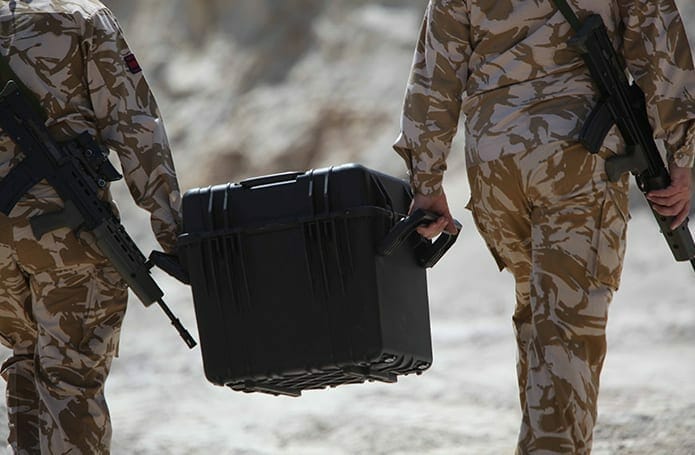
About the author

Kalon has strong knowledge and experience of timber, heavy duty and composite packaging, and holds an MPAS certification.
Products in this guide
Get in touch
Related guides
What is ISPM 15? A comprehensive guide for packaging requirements
7 advantages of using wooden export crates (and 5 disadvantages)
Export packing lists – 10 crucial details to include in 2025
Export packing guide – 7 considerations for international shipping
What is def stan 81-41 packaging? General requirements and testing
UK military packaging requirements – An essential guide
Transit cases – how to decide which is right for you
Shipping cases: 5 options for safe transit of your goods







